To inform debate over coal exports and oil shipments, Sightline is analyzing public at-grade rail crossings from Sandpoint, Idaho to Cherry Point, Washington.
If fossil fuel companies succeed in shipping the volumes of fuel they have planned, they will—by sheer physical necessity—disrupt vehicle and rail traffic all along the rail route. In this chapter of the series, we examine the effects in King County.
Coal and oil trains—loaded in the interior of North America and bound for the coast—would close off streets for hours each day.
The list of cities and crossings we analyze here is not comprehensive. Rather, we depict several representative locations in King County. In each of these places, we estimate that coal and oil trains would close streets by an average of between 49 minutes and 1 hour and 50 minutes, each day. At the slower speeds that are typical of urban areas, fossil fuel trains could shut down streets for more than 3 hours every day.
Note that these street closures would be in addition to street closures from current trains.
In our last installment, we examined street-rail interfaces in Thurston and Pierce Counties. In this chapter we look at the next leg of the journey as trains roll into King County and reach the city of Auburn.
Auburn, WA: W Main Street, 3rd Street NW, 29th Street NW, and 37th Street NW
Each crossing consists of two tracks and each is separated from street traffic by gates. At least 45 trains pass through Auburn’s crossing daily. Vehicle traffic is highest at West Main Street, with 6,750 average daily vehicles. Near the 29th Street NW crossing (the second from the top), the Emerald Downs horse racing track lies to the west of the railway, while Auburn Municipal Airport lies to the east.
From Auburn, coal and oil trains would continue north to reach Kent.
Kent, WA: Will Street, Titus Street, Gowe Street, Meeker Street, Smith Street, and James Street
The city of Kent is home to six BNSF public grade crossings, each protected by gates. The busiest of the roads, Willis Street, handles 20,200 vehicles on an average day. To the west of the Smith Street crossing (second from the top), the book icon represents the Kent Public Library, and the mortarboard icon represents the Green River Community College – Kent Campus.
Beyond Kent, trains soon reach the SoDo industrial district in south Seattle.
Seattle, WA: S Spokane Street, S Horton Street, S Lander Street, and S Holgate Street
Trains typically slow as they reach the congested streets of south Seattle and begin to disperse to destinations such as the seaport. The mainline BNSF tracks handle 49 trains each day with gates to segment the trains from road traffic. The Spokane Street crossing—beneath the Spokane Street Viaduct, which is elevated—sees 17,350 average vehicles daily. Holgate is classified as a “major truck street” by the Seattle transportation department. The “child crossing” icon at the north edge of the image represents a Head Start facility. (The image above indicates two crossings at Spokane Street because the at-grade crossing actually consists of an east bound street that is separate from the westbound street. At Holgate, we show two crossings because street actually crosses two sets of rail lines.)
Heading north from the SoDo district, trains enter the Great Northern Tunnel that passes beneath downtown Seattle. They emerge on the waterfront in the city’s Belltown neighborhood.
Seattle, WA: Wall Street, Vine Street, Clay Street, and Broad Street
On Seattle’s northern waterfront, the mainline BNSF tracks run alongside a pedestrian and bicycle path and directly in front of numerous businesses. Each crossing is protected by gates and sees 45 trains on a typical day. The highest street traffic here is at Broad Street, with 8,650 average daily vehicles. In the Google image above, it appears that traffic at Broad and Wall Streets is stopped because of a passing freight train.
More detailed analysis of the impact of coal trains on Seattle intersections can be found at:
- Sightline Institute, Why Seattle’s Freight Interests Should Care About Coal Exports
- Gibson Traffic Consultants, traffic study memorandum
- Parametrix, Coal Train Traffic Impact Study
Continuing north through Seattle, coal and oil trains reach the Interbay Railyards before proceeding to the rail trestle that spans Salmon Bay just west of the Ballard Locks.
Seattle, WA: Salmon Bay Bridge
The railway does not intersect with streets in this area, but the bridge must be raised to allow large ships to pass between Puget Sound and Seattle’s freshwater docks along the Ship Canal, Lake Union, and Lake Washington. Heavy fossil fuel train traffic may therefore create an additional complication because trains can only proceed when the bridge is lowered. Coal trains may also present an environmental hazard here, and coal chunks have already been found in the water beneath the trestle.
Northbound trains then travel directly adjacent to Puget Sound, passing through popular parks like Golden Gardens and Carkeek in Seattle and Richmond Beach in Shoreline before reaching waterfront communities in Snohomish County, which we will examine in our next installment.
You can enlarge the images by clicking on them.
Click here for notes, sources, and methodology.
John Abbotts is a former Sightline research consultant who occasionally submits material that Sightline staff turn into blog posts. Thanks to Devin Porter of Goodmeasures.biz for designing the table.
Have photos of a crossing featured in this series? Share them in our “Wrong Side of the Tracks” Flickr pool.

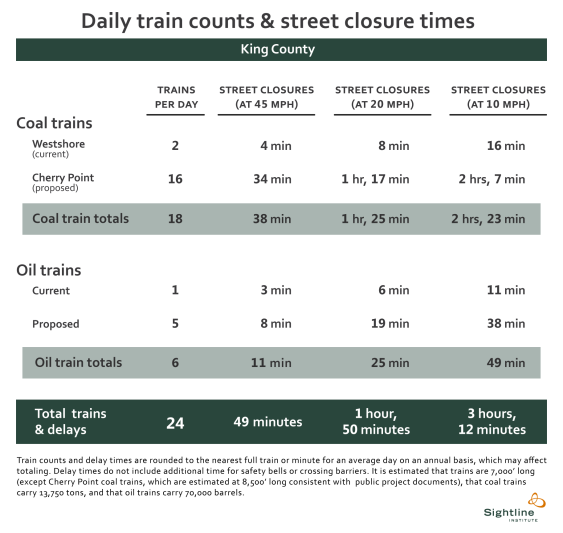
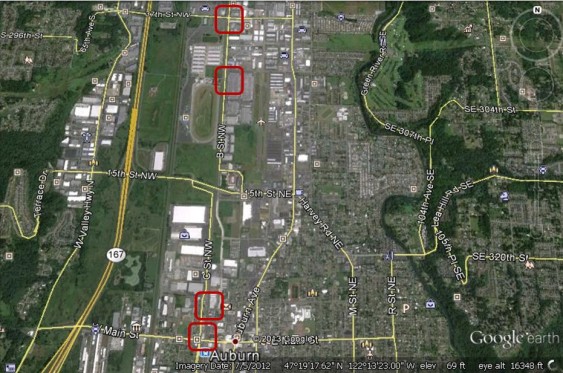

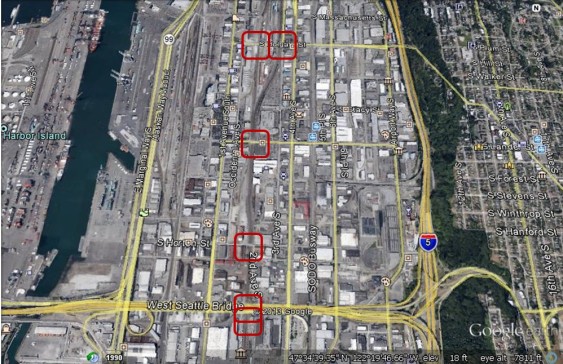
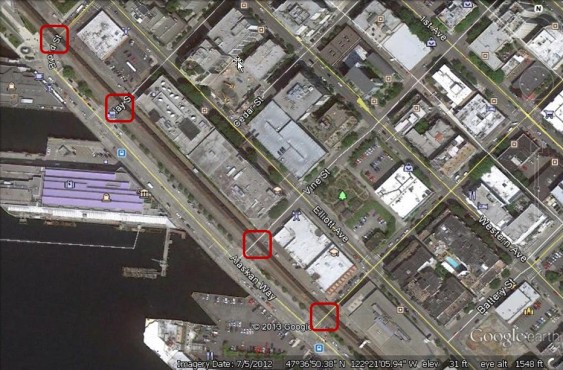
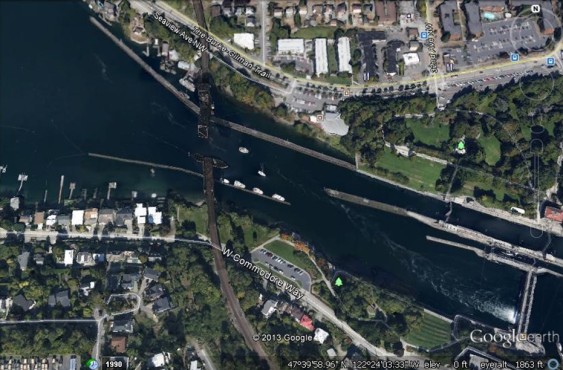

Comments are closed.